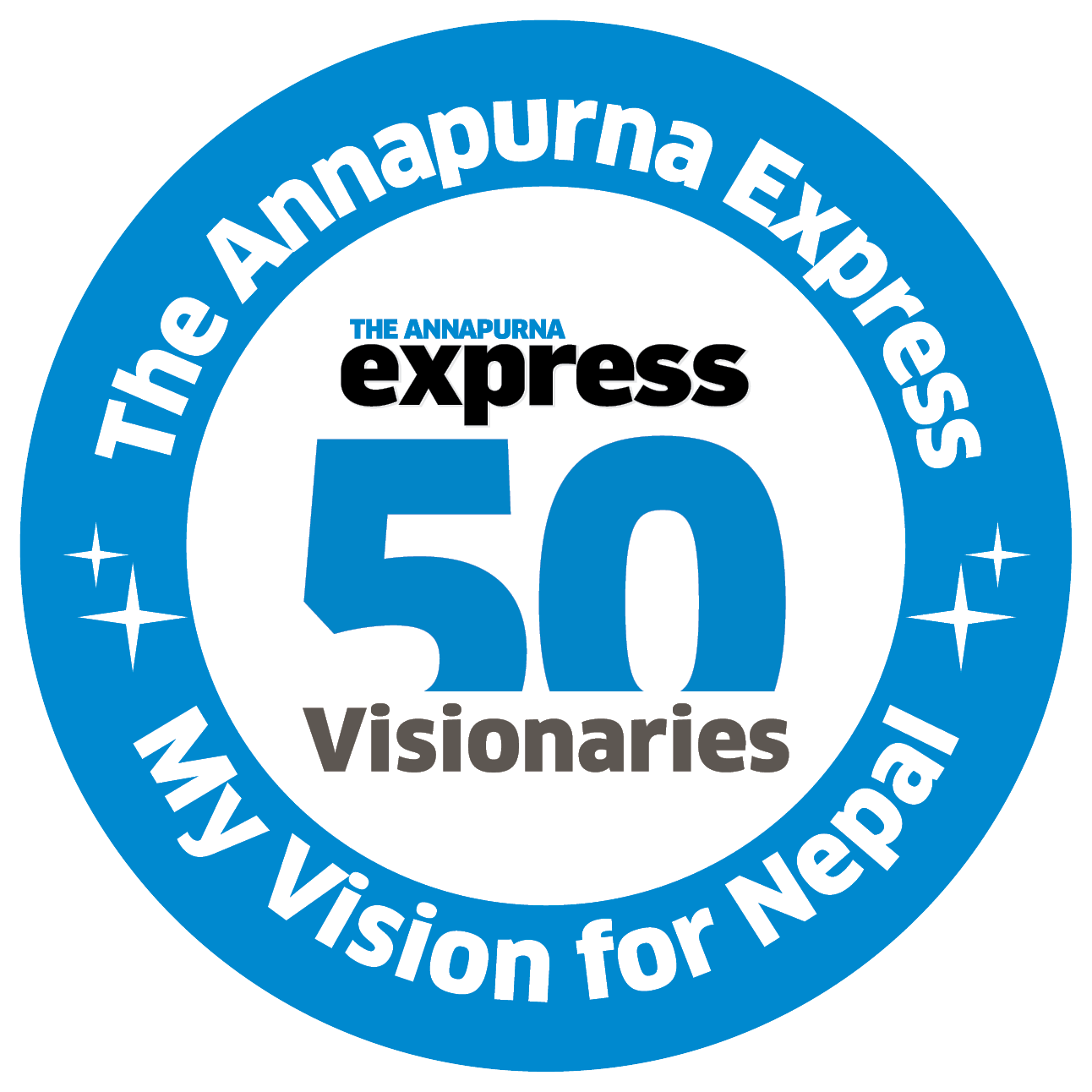Socially just cities rich in native architecture
Three ways to realize the vision:
1) Realize the value of our diverse region-specific architecture. Start by setting examples with our public buildings.
2) Provide incentives for people to conserve local architecture and have policies and guidelines for construction and design in culturally/naturally/architecturally significant areas.
3) Enhance public infrastructures for social equity, starting with public transport, open public spaces and green parks.
Nepal is a country of unique cultures and traditions. But our development remains unplanned. I think our infrastructure models should rely on traditional and long-lasting structures. Nepal has been forgetting its strength because of unplanned urbanization and haphazard construction. Kathmandu, a city of temples, has turned into a concrete forest.
While planning cities or buildings, we should not forget we are building them in Nepal and that they should carry Nepali essence and identity. In the race to copy styles from abroad, we forgot Nepali models and architects. This has been happening for long—Chandra Shumsher did not use our designs for Singhadurbar and other palaces even as he copiously copied from Europe.
These days, even villages are pursuing unplanned urbanization. So, governmental offices should be built in artistic ways—initially to set the example for the public. For instance, stone-roofed houses are the major attraction of the Gurung community and they should be preserved.
Mustang not only attracts me with its natural landscape. I am compelled to go there to enjoy the atheistic feel of its houses. Those houses, with their own history and identity, have been tried and tested for habitat and climate. They have become a part of the natural landscape.
Nepal has many palace squares and other traditional areas but their surroundings are not well maintained. If I take a picture of Patan Durbar Square, tall concrete buildings come in the background, destroying the entire landscape. This is the problem of every cultural place in Nepal. If this continues, we could soon have no tourists.
Our country has centuries-old settlements like Bungmati and Sunakothi. If we cannot intervene to preserve such places, forget tourists, we won’t be able to show our identity to upcoming generations. These are identity-oriented developments and we should be proud of them.
Of course, everyone wants to live comfortably. For instance, Newa culture houses have small windows and they don’t allow adequate light. But, if we can both preserve our heritage as well as live comfortably, why shouldn’t we? In Rome, many houses have a front-facing dummy with cultural designs and inside—everything looks modern. We can do the same in Nepal. Imagine Kathmandu with similar artistic Newa houses.
If we compare the pictures of Amsterdam and Dillibazar from the 1960s, there are not many differences. But today, Dillibazar is nowhere close to Amsterdam.
These things need a tremendous level of economic and financial support. So both government and communities should plan and collaborate to revive our culture. We have local governments and they have enough budget and power. They should be concerned about these things.
One exemplary initiative has been undertaken by the local level officials of Upper Mustang. They put all the electric wires that were undermining the essence of the historic place underground. It would have taken only a few months to connect wires through electric poles, but they didn’t care about time and took them all underground in three years. This single undertaking helped preserve the old identity and the atheistic appeal of Upper Mustang. So, we should prioritize quality of development instead of its quantity.

Kirtipur Municipality mandates that every house there be built in Newa style. It is a progressive initiative but people there are not happy. A few months ago, I was there for a survey. They told me that wooden carved windows and doors are major parts of Newa houses, but they cost a lot more compared to normal ones and they thus couldn’t afford them. So the municipality should help those residents financially or in some other way.
We have been oriented to think that having tall buildings and adding lanes on roads are the only indicators of development. We lack public transport. If the government provides well-managed public transport, no one will buy individual cars—significantly reducing traffic jams. Nepal also doesn’t have infrastructures for pedestrians or cyclists.
A well-planned concept of urban development never discriminates between the rich and the poor. It also assures safety for everyone, thus ensuring social justice and equity. Planning should prioritize pedestrians by constructing facilitated footpaths, with benches, trees, and lights. Not only Kathmandu, other cities should also develop in this way. When public infrastructures are at par with private infrastructure, we can feel real development.
To take another example, the trekking route to Tilicho Lake has been widened, creating problems for trekkers. Yes, we need roads but pedestrians should get priority. Trekking is also a culture that needs preservation. So, region-specific development is necessary. That trekking route, for instance, might be better off with ropeways instead of roadways. Each place has its unique identity.
We can’t compete with the globalization of Dubai, nor with the architecture of Paris. So we need to assess our current situation: how do we showcase our identity?
Nepali urban areas lack parks, greenery, and open spaces. There are no places for kids and elders to play, walk and communicate. This has ruined relationships in neighborhoods. Children don’t have anyone to interact with, nor do the elderly. The best memory we have from our childhood is of outdoor games but kids are unable to enjoy that now.
The structure of urban society forced our grandparents to stay indoors, badly impacting their psychology. Only by finding solutions to these problems will Nepal really develop. The earthquake and the Covid-19 pandemic also taught us the importance of open spaces.
The things I talked about can’t happen with the effort of an individual, so let’s hope our government and administration also buy into it.

Quick Questions:
Who is your role model in Nepal?
There are many but Kulman Ghising and Maha Jodi always come first.
Any book that inspired you?
I enjoy reading books based on the themes of Bhagwat Gita. This timeless book inspires me and provides positive vibes in a chaotic world.
Why did you choose to study architecture?
Since childhood, I have had an interest in buildings and designs. Moreover, an American sitcom “How I Met Your Mother” has an architect character, Ted Mosby. This is where I learned the word “architecture”. The series and the character fascinated me—creating real things from abstract designs and pencil sketches is powerful work.












